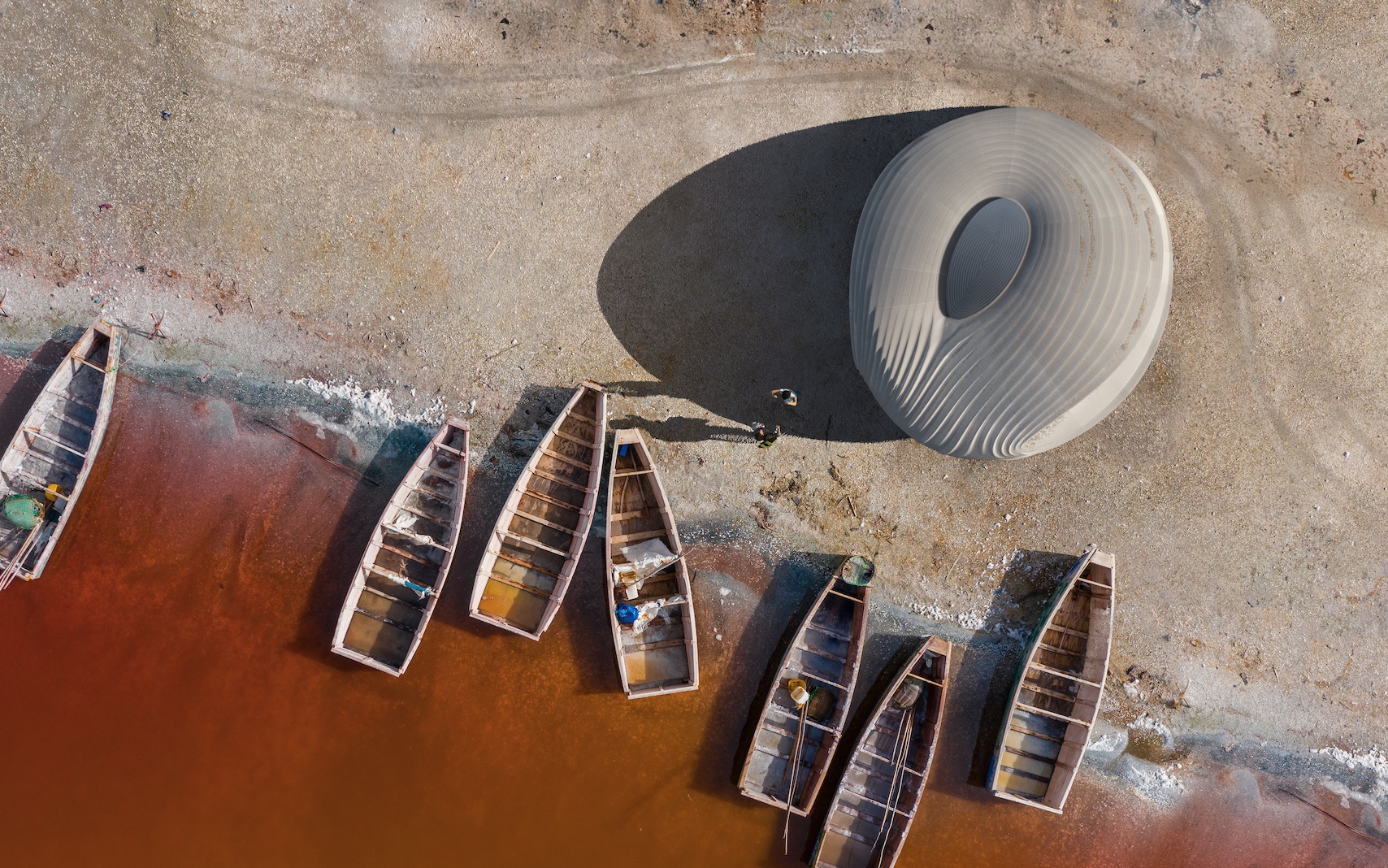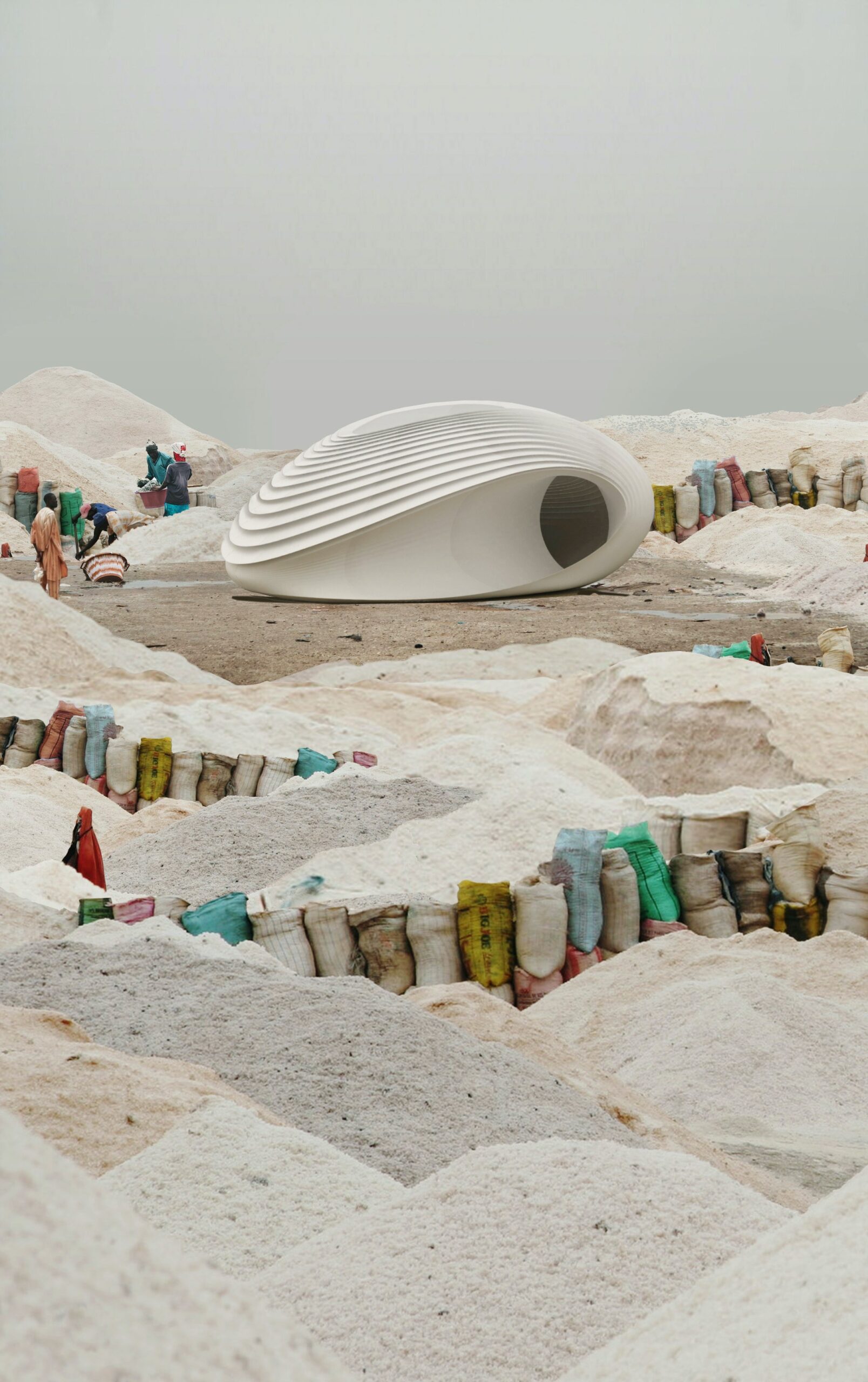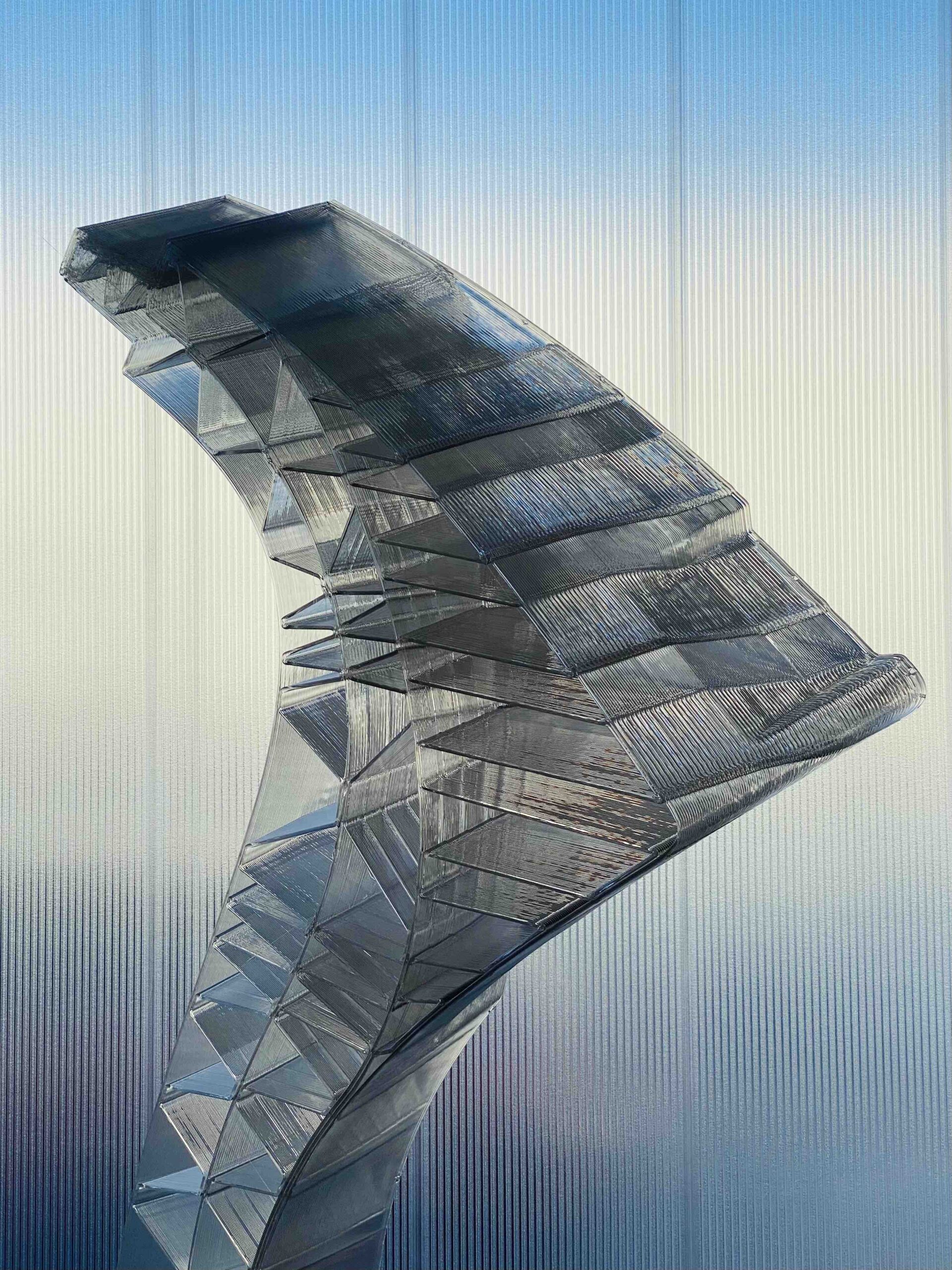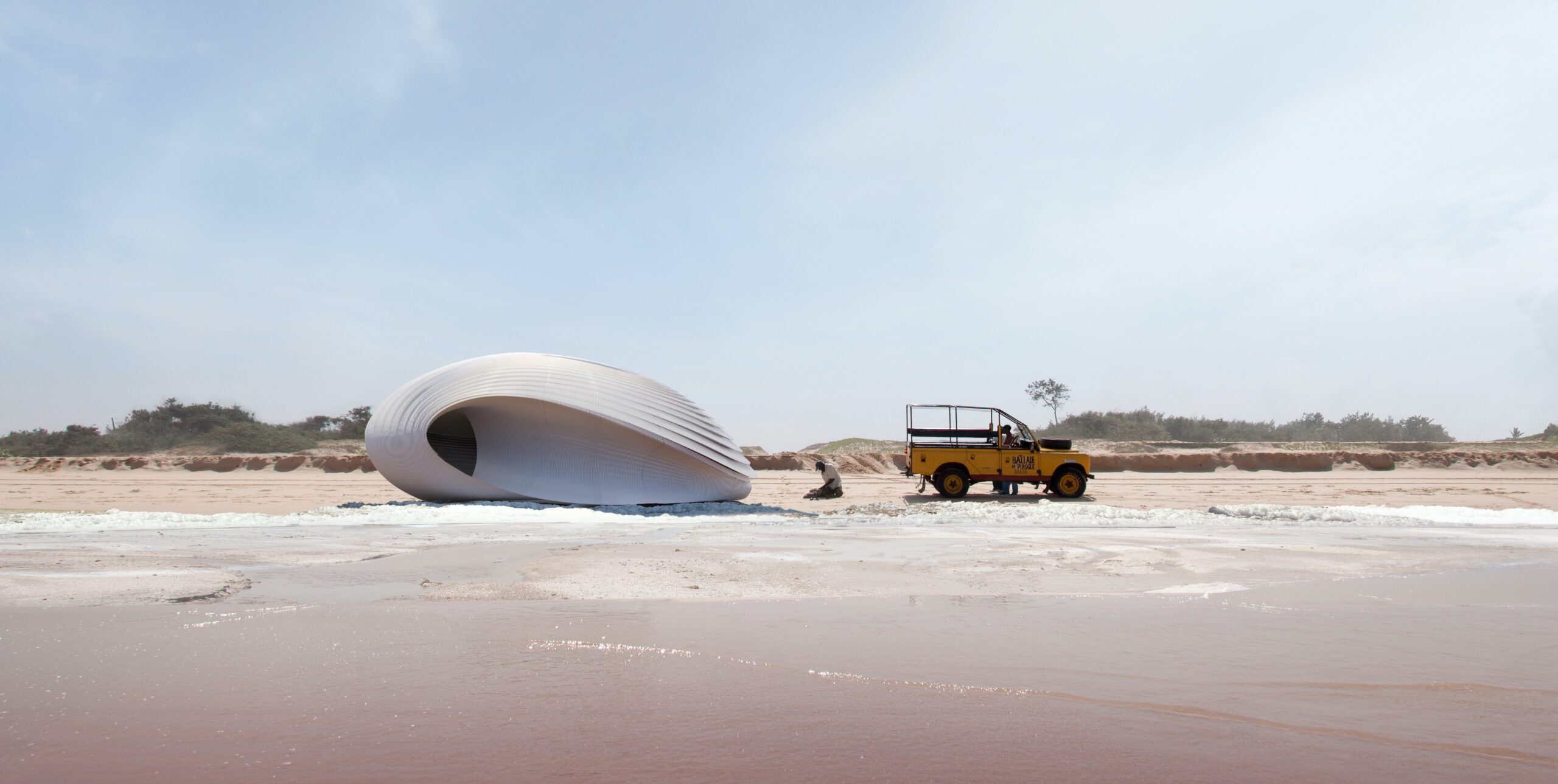Hassell is working with charitable foundation To.org to create a plastic pavilion that can act as a single-room shelter in harsh environments. Yet this complex, high-tech concept has been built around discarded hospital equipment from Europe
 Photography by imigo.lt
Photography by imigo.lt
Words by Joe Lloyd
Plastic pollution is one of the most appalling scourges of the Earth’s environment. Currently only 9% of plastic is recycled. Every year, more than 8bn kg of plastic waste flows into the oceans. To prevent numerous ecosystems from being choked by these deposits, we need to create new and ingenious ways of recycling them.
A new project by the design studio Hassell represents one of these solutions. The studio has worked with leading 3D printer Nagami on a smooth, sleek pavilion made from discarded medical equipment, gathered from hospitals across Europe.
The pavilion is a collaboration with the charitable foundation To.org, a collective of ‘creative activists’ which deploys its expertise in architecture, art and materials to create positive change.
Its concept was inspired by the Qarmaq, a single-room family dwelling used by Inuits that represents a low-tech form of shelter against an inhospitable environment. But this project is very high-tech indeed. Designed entirely using computational techniques, the pavilion is fabricated by a 3D printer into 24 separate pieces. These can then be transported and assembled on site.
 Photography by imigo.lt
Photography by imigo.lt
The design can be tweaked for different conditions. A cold-climate variant includes a finned outer skin that can capture snow and create natural insulation, while in hotter climates overlapping skins offer natural shade and allow for passive cooking, cross ventilation and water harvesting.
Hassell is an international architecture and landscape firm with a long, diverse list of projects. Originally founded in Adelaide, Australia, in 1938, it now has nine offices across five countries. In 2020, Hassell collaborated with OMA on the WA Museum Boola Bardip in Perth, Australia, tying together existing heritage structures into a unique new museum.
And last year the studio won acclaim for its First Light Pavilion and visitor centre at the Jodrell Bank Observatory in Macclesfield, UK, as well as collaborating with To.org and LocalWorks on a music centre in the Bidibidi refugee camp in Uganda.
Hassell has long been interested in exploring the impact of new technology on design. One previous project saw it work with NASA to imagine a 3D-printed environment on Mars.
 Photography courtesy of Hassell
Photography courtesy of Hassell
‘The project came about following a visit to Biofabricate, a yearly conference on sustainable biomaterials for the design, fashion and architecture industry,’ explains Xavier De Kestelier, principal and head of design at Hassell.
To.org co-founder and CEO Nachson Mimran had previously seen the Mars Habitat Project, and approached Hassell. ‘The next weekend,’ De Kestelier continues, ‘we’d started conversations on what we could do next, and the idea came into fruition.’
The pavilion is not Hassell’s first collaboration with Nagami. De Kestelier and Nagami worked together at the Norman Foster Foundation’s Robotics Atelier in 2019, working with 10 students to imagine 3D-printed facades created from recycled plastics.
 Photography by imigo.lt
Photography by imigo.lt
‘Working with Nagami on this project,’ says De Kestelier, ‘enabled us to design alongside the specialists in large-scale 3D printing – providing us with feedback on what is feasible and where the constraints would be in real time.’
Insights from this process informed the design of the pavilion, currently being fabricated in Spain. When it is completed, the Hassell team will head over to see the final design. Then they will determine where to place it. Visibility is key.
‘The pavilion location is yet to be announced,’ says De Kestelier, ‘but it will be somewhere public – we’d like everyone to be able to see the structure and be inspired by the materials and methods used to produce it.’ Once installed, the designers hope it will serve as a beacon to demonstrate how plastic waste can become an ecologically friendly construction source.
Get a curated collection of design and architecture news in your inbox by signing up to our ICON Weekly newsletter

















